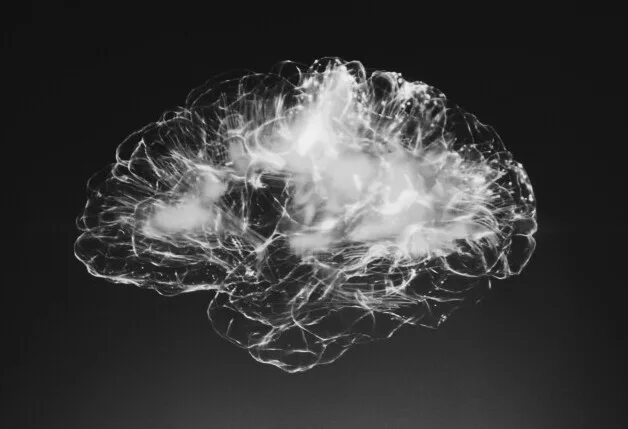Introduction
Imagine watching your newborn transform from a tiny, sleepy bundle into an active, curious little person exploring the world around them. Every smile, every sound, every wide-eyed gaze is a glimpse into the incredible journey of cognitive development—a process so fascinating and profound that it shapes the very foundation of who your child will become. In this post, we’ll delve into the wonders of cognitive development in infants, unraveling how your baby learns, thinks, and begins to understand the world. From the first coo to that moment when they recognize your face, let’s explore the magic happening inside your baby’s brain that’s paving the way for their future.

Table of Contents
What Is Cognitive Development In Infants?
Cognitive development refers to the process by which infants and children acquire the ability to think, learn, reason, and understand the world around them. It encompasses various mental processes, including memory, problem-solving, language development, and perception. This developmental stage is crucial as it lays the groundwork for all future learning and intellectual growth.
During the first few years of life, a baby’s brain undergoes rapid changes and development. Neurons, the brain’s nerve cells, are forming connections at an astonishing rate, with more than one million new neural connections being formed every second in the first few years . This process is driven by a combination of genetic factors and environmental stimuli, making the experiences you provide for your baby pivotal in their cognitive growth.
The Stages of Cognitive Development in Infants
Renowned developmental psychologist Jean Piaget identified four stages of cognitive development, with the first stage—the sensorimotor stage—occurring from birth to about two years of age. This stage is characterized by the infant’s understanding of the world through their sensory experiences and motor activities. Let’s explore the key milestones within this stage:
1. Reflexes (Birth to 1 Month)
In the earliest weeks of life, an infant’s actions are dominated by innate reflexes. These include sucking, grasping, and rooting, which are crucial for survival. While these reflexes are automatic and not learned, they form the foundation for more complex behaviors that will emerge as the infant interacts with their environment.
2. Primary Circular Reactions (1 to 4 Months)
Around this time, infants begin to gain more control over their movements and start to repeat actions that bring them pleasure, such as sucking their thumb or waving their arms. These actions are called primary circular reactions, where the infant focuses on their own body and the immediate results of their movements. This repetition is an early form of learning, helping the infant to understand cause and effect.
3. Secondary Circular Reactions (4 to 8 Months)
As babies grow, they begin to interact more with the world around them. During this stage, infants start to repeat actions that involve objects and people outside of their own body. For example, they might repeatedly shake a rattle to hear the sound it makes, or they might drop a toy to watch someone pick it up. These actions are secondary circular reactions and mark the beginning of goal-oriented behavior.
4. Coordination of Secondary Schemas (8 to 12 Months)
Between eight and twelve months, infants begin to exhibit more intentional and coordinated behaviors. This stage is characterized by goal-directed actions where babies start combining previously learned actions to solve problems or achieve a specific outcome. For instance, they might push one toy aside to reach another toy that is partially hidden. This stage is also when infants develop object permanence—the understanding that objects continue to exist even when they cannot be seen, heard, or touched.
5. Tertiary Circular Reactions (12 to 18 Months)
In this phase, infants become little explorers, experimenting with different actions to observe various outcomes. This period is marked by curiosity and experimentation. For example, a child might drop a toy from different heights to see how it falls or use various objects to hit a drum to produce different sounds. These experiments help them learn about the physical properties of objects and the world around them.
6. Mental Representation (18 to 24 Months)
By the end of the sensorimotor stage, infants begin to develop the ability to form mental representations of objects and events. This means they can think about things that are not immediately present and can imitate behaviors they have seen in the past, even if the model is no longer in front of them. This stage also marks the beginning of symbolic play, where an infant might use a block as a pretend phone, demonstrating their growing imagination and understanding of symbols.
The Role of Play in Cognitive Development
Play is not just a way for infants to pass the time—it is a crucial component of cognitive development. Through play, babies explore their environment, learn new skills, and develop their understanding of the world. Whether it’s through sensory play, interactive games, or imaginative play, each activity contributes to their cognitive growth in unique ways.
Sensory Play: Activities that engage a baby’s senses—such as touching different textures, listening to various sounds, or exploring colorful toys—help stimulate their brain and promote neural development. Sensory play supports the development of fine and gross motor skills, problem-solving abilities, and cognitive growth.
Interactive Play: Playing with others, especially caregivers, helps infants learn about communication, social cues, and relationships. Simple games like peek-a-boo, for example, help babies understand object permanence and develop their memory.
Imaginative Play: As infants grow older and their cognitive abilities expand, imaginative play becomes a critical way for them to explore different scenarios and roles. Pretend play fosters creativity, problem-solving, and language development as they navigate various situations and interactions within their imaginative world.
Language Development: A Key Aspect of Cognitive Growth
One of the most significant aspects of cognitive development in infants is language acquisition. The ability to understand and use language is a complex process that begins long before a child utters their first word. From cooing and babbling to eventually forming words and sentences, the journey of language development is deeply intertwined with cognitive growth.
The Pre-Linguistic Stage (Birth to 12 Months): During this stage, infants communicate through sounds, facial expressions, and gestures. They begin to understand the rhythm and melody of language by listening to those around them. Responding to your baby’s coos and babbles is crucial as it encourages them to continue practicing these early forms of communication.
The Holophrastic Stage (12 to 18 Months): At this stage, infants begin to use single words, often referred to as “holophrases,” to express entire thoughts. For example, a baby might say “milk” to mean “I want milk.” This period marks the beginning of symbolic thought, where words are used to represent objects, actions, and ideas.
The Two-Word Stage (18 to 24 Months): As vocabulary expands, infants start combining two words to form simple sentences, such as “more juice” or “big dog.” This stage signifies a leap in cognitive development as children begin to understand the rules of grammar and sentence structure.
The Importance of Early Stimulation and Interaction
The experiences and interactions your baby has in the first few years of life play a significant role in shaping their cognitive development. Providing a stimulating environment filled with opportunities for exploration, play, and communication is key to fostering cognitive growth.
Reading Together: Reading to your baby from an early age not only helps with language development but also introduces them to the concept of stories, characters, and different worlds. Even before they can understand the words, they are absorbing the rhythms of language, the sounds of different words, and the connection between pictures and meanings.
Talking to Your Baby: Engaging in conversations with your baby, even when they are too young to respond, helps them learn the structure and flow of language. Narrate your day, describe what you’re doing, and respond to their sounds and gestures—this constant interaction is crucial for cognitive and language development.
Creating a Safe Environment for Exploration: Babies learn about the world through exploration. Providing a safe environment where they can explore freely allows them to develop their cognitive abilities, motor skills, and problem-solving techniques. Childproof your home to ensure that your baby can explore with minimal restrictions and maximum safety.
Recognizing Individual Differences in Cognitive Development
It’s important to remember that cognitive development can vary widely from one infant to another. Some babies may reach milestones earlier or later than others, and this variability is perfectly normal. Factors such as genetics, environment, and early experiences all contribute to the pace at which a child develops cognitively.
If you have concerns about your baby’s cognitive development, it’s always a good idea to discuss them with your pediatrician. Early intervention can be beneficial if there are developmental delays, but it’s also important to recognize that each child develops at their own pace.
Conclusion: Nurturing Your Baby’s Growing Mind
Cognitive development in infants is a remarkable journey that begins at birth and continues to evolve as they grow. By understanding the stages of cognitive development and providing a nurturing, stimulating environment, you can support your baby’s intellectual growth and help them build a strong foundation for future learning.
Remember, every interaction, every word, every moment of play is an opportunity for your baby to learn and grow. Embrace these precious early years, and take joy in watching your little one’s mind blossom as they discover the world around them.
Sources:
- Centers for Disease Control and Prevention. (2022). Important Milestones: Your Baby By Two Years. Retrieved from https://www.cdc.gov/ncbddd/actearly/milestones/milestones-2yr.html
- American Psychological Association. (2021). Cognitive Development in Children. Retrieved from https://www.apa.org/
- Piaget, J. (1952). The Origins of Intelligence in Children. International Universities Press.
Additional Resources
Be sure to browse around and check out some of our other must reads, such as, #1 Best Quality Baby Formula | (new-parents.com).
